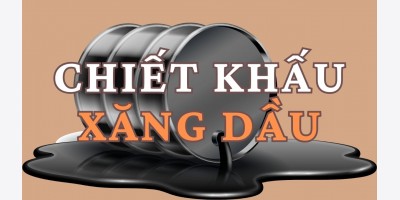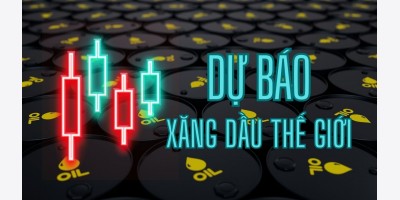Dầu thô tiếp tục tăng nhẹ sáng nay
Giá dầu thô phiên châu Á sáng nay tiếp tục tăng nhẹ so vá»›i cuối phiên hôm qua do giá»›i đầu tÆ° vẫn còn lạc quan trÆ°á»›c số liệu kinh tế tích cá»±c đến từ quốc gia tiêu thụ thứ hai trên thế giá»›i -Trung Quốc là ngành sản xuất của nÆ°á»›c này mở rá»™ng trong tháng 10, cÅ©ng nhÆ° sá»± kỳ vá»ng Cục dá»± trữ liên bang (Fed) sẽ tiếp tục công cuá»™c kích thích tăng trưởng ná»n kinh tế.
NhÆ° váºy, giá dầu Ä‘ã Ä‘iá»u chỉnh lên mức 83 USD/thùng vào sáng nay và hiện tại lúc 10h (giá» Việt Nam) giá Ä‘ang ở mức 83,05 USD/thùng sau khi tăng 1,9% và Ä‘óng cá»a ở mức 82,93 USD/thùng trong phiên Mỹ tối qua.
NhÆ° váºy, giá dầu Ä‘ã tăng qua ngày thứ hai liên tiếp sau khi Trung Quốc công bố chỉ số sản xuất PMI của nÆ°á»›c này Ä‘ã tăng lên 54,7 trong tháng 10 từ mức 53,8 trong tháng 09, vượt quá mức dá»± báo 53,8 Ä‘iểm của 13 chuyên gia kinh tế trong khảo sát Bloomberg.
Thêm vào Ä‘ó là sá»± kỳ vá»ng của thị trÆ°á»ng trong cuá»™c há»p của Fed vào tối nay và ngày mai, các nhà hoạch định chính sách sẽ thông báo chÆ°Æ¡ng trình mua trái phiếu dài hạn trị giá 500 tỉ USD trong chiến lược kích thích tiá»n tệ được biết nhÆ° là ná»›i lá»ng định lượng.
“Sá»± kết hợp dữ liệu quan trá»ng của Trung Quốc và những kỳ vá»ng trong chính sách ná»›i lá»ng định lượng tuần này tiếp thêm niá»n tin cho giá»›i đầu tÆ° giao dịch dài hạn,” dẫn lá»i ông Phil Flynn, phó chủ tịch há»™i nghiên cứu tại PFGBest ở Chicago.
Dầu thô Brent tại London trong phiên giao dịch cuối ngày hôm qua cÅ©ng tăng 1,47 USD/thùng, tức 1,8%, lên mức 84,62 USD/thùng.
Thêm vào Ä‘ó, số liệu dá»± báo của Tempe vá» chỉ số sản xuất ISM của Mỹ Ä‘ã tăng lên 56,9 trong tháng 10 từ mức 54,4 trong tháng 09, chứng tá» ná»n sản xuất của Mỹ cÅ©ng Ä‘ang đạt được mức tăng trưởng ổn định.
Bá»™ trưởng dầu má» Ali al-Naimi phát biểu tại Singapore rằng Ả Ráºp Saudi chỉ có thể tiếp tục khai thác và cung cấp trong 80 năm nữa nếu không tìm thêm được giếng dầu má»›i nào.
Ông al-Naimi cho biết các nÆ°á»›c tiêu thụ dầu hài lòng vá»›i mức giá 70-90 USD/thùng. Hồi tháng 04, ông cho rằng giá dầu ở ngưỡng 70-80 USD/thùng có thể Ä‘ã gần đạt đến mức giá lý tưởng và ông hy vá»ng dầu sẽ duy trì trong khoảng này.
Credit Agricole CIB cho biết, Pháp sẽ cần tăng nháºp khẩu xăng và tăng sản xuất nhiên liệu sau khi các cuá»™c Ä‘ình công của công nhân gây giảm trữ lượng nhiên liệu ở nÆ°á»›c này.
Ông Christophe Barret, chuyên gia phân tích dầu tại London nói trong bản báo cáo hôm qua, trong tuần cuối cùng của tháng 10, trữ lượng xăng và nhiên liệu của Pháp, bao gồm dầu há»a và diesel, giảm xuống dÆ°á»›i 53 triệu thùng, dÆ°á»›i mức trung bình 8,6 triệu thùng kể từ 2003-2008.
Tình trạng lao Ä‘á»™ng bất ổn ở Pháp trong tháng qua khiến 10 nhà máy lá»c dầu phải tạm ngÆ°ng hoạt Ä‘á»™ng, các trạm xăng thiếu nhiên liệu cung ứng và đẩy giá bán sỉ tăng lên.
Oil Rises a Second Day on Chinese Manufacturing, U.S. Stimulus Speculation
By Mark Shenk and James Paton - Nov 2, 2010 6:43 AM GMT+0700 Tweet LinkedIn Share
Business Exchange Buzz up! Digg Print Email
Crude oil rose for a second day, trading above $83 a barrel after climbing to a two-week high on growth in Chinese manufacturing and expectations the Federal Reserve will take steps to stimulate the U.S. economy.
Oil rose 1.9 percent yesterday as China’s Federation of Logistics and Purchasing said the country’s purchasing managers’ index climbed to 54.7 in October from 53.8. Fed policy makers meeting today and tomorrow will likely announce a program to buy at least $500 billion of long-term securities in a monetary- stimulus strategy known as quantitative easing, according to economists surveyed by Bloomberg News.
“The combination of the strong Chinese data and expectations for quantitative easing this week is giving traders good reasons to be long,” said Phil Flynn, vice president of research at PFGBest in Chicago.
Oil for December delivery rose 27 cents, or 0.3 percent, to $83.22 a barrel on the New York Mercantile Exchange at 10:36 a.m. in Sydney. Oil advanced $1.52 to $82.95 yesterday, the highest settlement since Oct. 18.
Brent crude oil for December settlement increased $1.47, or 1.8 percent, yesterday to end the session at $84.62 a barrel on the London-based ICE Futures Europe exchange.
The Chinese purchasing managers’ index exceeded a forecast of 53.8, the median estimate of 13 economists surveyed by Bloomberg News. The country overtook the U.S. last year as the biggest energy user.
U.S. Factory Index
The Institute for Supply Management’s factory index rose to 56.9 in October from 54.4 a month earlier, the Tempe, Arizona- based group said yesterday. Readings greater than 50 signal growth. Economists forecast the ISM manufacturing gauge would decline to 54, according to the median of 75 projections in a Bloomberg News survey. Estimates ranged from 52 to 56.8.
The ISM’s U.S. new orders climbed to 58.9 from 51.1, while the production index jumped to 62.7 from 56.5.
Consuming countries are happy with oil between $70 and $90 a barrel, al-Naimi said. In April he said prices in the $70- to-$80 range are “as close to perfect as possible” and that he hoped oil would remain in that range.
Saudi Arabia has the capacity to continue supplying crude for another 80 years even if no new discoveries are made, Oil Minister Ali al-Naimi said in Singapore. The country is adding new reserves equal to the amount it is extracting each year, he said in a speech at the Singapore Energy Summit yesterday.
Hedge funds and other large speculators increased wagers on rising crude prices by 9.3 percent in the seven days ended Oct. 26, according to the Commodity Futures Trading Commission’s weekly Commitments of Traders report.
French Stockpiles
France will need to increase gasoil imports and boost refinery production after last month’s workers’ strikes left the country with reduced fuel inventories, Credit Agricole CIB said.
French inventories of gasoil, fuel that includes heating oil and diesel, fell below 53 million barrels at the end of last month, Christophe Barret, a London-based oil analyst, wrote in an e-mailed report yesterday. That’s 8.6 million barrels below the five-year average from 2003 to 2008.
Labor unrest across France last month caused 10 refineries to halt operations, leaving some service stations without fuel and pushing up wholesale prices.








